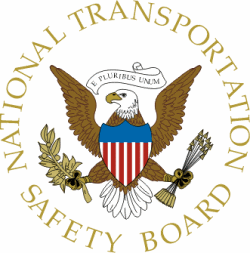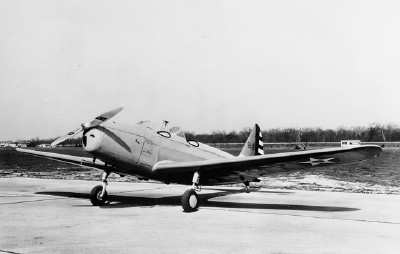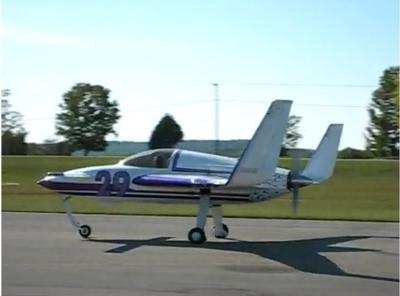NTSB Reports Both Pilots Operating In VFR Conditions When
Accidents Occurred
Two NTSB preliminary reports issued this week chronicle two
similar accidents in which the airplanes struck suspended wires and
then impacted the ground. The accidents fatally injured two pilots
and one passenger. One was the first test flight of Jack
Morrison's experimental E-Racer aircraft after he had received
paperwork for the plane making it legal to fly.

While it will likely be months before any probable cause reports
are issued, the reports do serve as a cautionary tale as our summer
flying season continues.
NTSB Identification: CEN11LA569
14 CFR Part 91: General Aviation
Accident occurred Saturday, August 13, 2011 in Madrid, IA
Aircraft: FAIRCHILD M-62, registration: N53956
Injuries: 2 Fatal.
This is preliminary information, subject to change, and may
contain errors. Any errors in this report will be corrected when
the final report has been completed.
On August 13, 2011, about 1200 central daylight time, a 1943
Fairchild M-62 (PT-19A) airplane, N53956, was substantially damaged
when it impacted power lines and terrain near Madrid, Iowa. The
pilot and passenger were fatally injured. The World War II era
military training airplane was registered to a private individual.
It had been restored and was being operated by the Iowa Aviation
Heritage Museum. The personal flight was being conducted under the
provisions of 14 Code of Federal Regulations Part 91. Visual
meteorological conditions prevailed for the flight, which was not
operated on a flight plan. The flight originated from Boone
Municipal Airport (BNW), Boone, Iowa, about 1130. The intended
destination was Ankeny Regional Airport (IKV), Ankeny, Iowa.
Fairchild PT-19 File Photo

The pilot reportedly flew to BNW that morning for a fly-in
event. During the event, the pilot gave rides to several attendees.
Prior to departure, the pilot apparently commented that he would be
returning to IKV by following the Des Moines River.
A witness who was fishing along the shoreline of the river
reported that the airplane approached his location from the north.
He estimated that the airplane was initially about 500 feet above
ground level (agl) and descending. The airplane subsequently struck
power lines suspended about 200 feet above the river. The airplane
impacted a sandbar on the river, coming to rest inverted.
NTSB Identification: CEN11FA537
14 CFR Part 91: General Aviation
Accident occurred Sunday, July 31, 2011 in Big Rock, IL
Aircraft: Morrison E-Racer, registration: N345JM
Injuries: 1 Fatal.
This is preliminary information, subject to change, and may
contain errors. Any errors in this report will be corrected when
the final report has been completed.
On July 31, 2011, at 0748 central daylight time, an experimental
amateur-built Morrison model E-Racer airplane, N345JM, was
substantially damaged when it collided with power lines and terrain
while maneuvering during a test flight near Big Rock, Illinois. The
pilot was fatally injured. The airplane was registered to and
operated by the private pilot under the provisions of 14 Code of
Federal Regulations Part 91. Day visual meteorological conditions
prevailed for the flight, which operated without a flight plan. The
test flight originated at 0744 from the Aurora Municipal Airport
(KARR), Sugar Grove, Illinois.
Morrison E-Racer Youtube Frame
Capture

The accident flight was the airplane's first flight since being
issued an experimental airworthiness certificate. According to air
traffic control data, the pilot contacted ground control at 0739
for a taxi clearance to runway 27. The pilot stated that it was the
airplane's first flight and that he wanted to circle the airport at
2,500 feet. At 0742, the pilot contacted the control tower for a
takeoff clearance on runway 27. The tower controller cleared the
airplane for takeoff on runway 27 and to circle the airport at
2,500 feet, making left turns. At 0744:12, radar contact was
established with the airplane at 900 feet, west of the departure
end of runway 27, in a climbing left turn. The airplane climbed to
2,600 feet while maintaining a 1 mile radius from the airport. At
0747:29, as the airplane was completing its first orbit of the
airport, the pilot radioed the tower controller that the airplane
was experiencing high engine cylinder head temperatures and that he
would like to land. The pilot was told there was a calm wind and
that he was cleared to land on either runway 27 or runway 9. At
0747:42, the pilot replied that he would land on runway 27. There
were no additional communications received from the pilot. The last
radar return was recorded at 0748:11, about 2 miles west-southwest
of KARR, at 1,100 feet.
A witness, who was driving eastbound on Granart Road, saw the
accident airplane flying at a low altitude, between 100 to 150 feet
above the ground, immediately north of Granart Road. The airplane
was traveling at a high speed in a slight left turn with its
landing gear retracted. The airplane leveled its wings momentarily
before it entered a left wing low, wings near vertical, descent.
The airplane collided with power lines and a cornfield in the near
vertical descent.
 A Crazy Tesla Flying Car is Coming
A Crazy Tesla Flying Car is Coming ANN's Daily Aero-Term (11.xx.25): NonApproach Control Tower
ANN's Daily Aero-Term (11.xx.25): NonApproach Control Tower Aero-News: Quote of the Day (11.01.25)
Aero-News: Quote of the Day (11.01.25) ANN's Daily Aero-Linx (11.01.25)
ANN's Daily Aero-Linx (11.01.25) Classic Aero-TV: EAA Introduces Angle of Attack Training
Classic Aero-TV: EAA Introduces Angle of Attack Training





